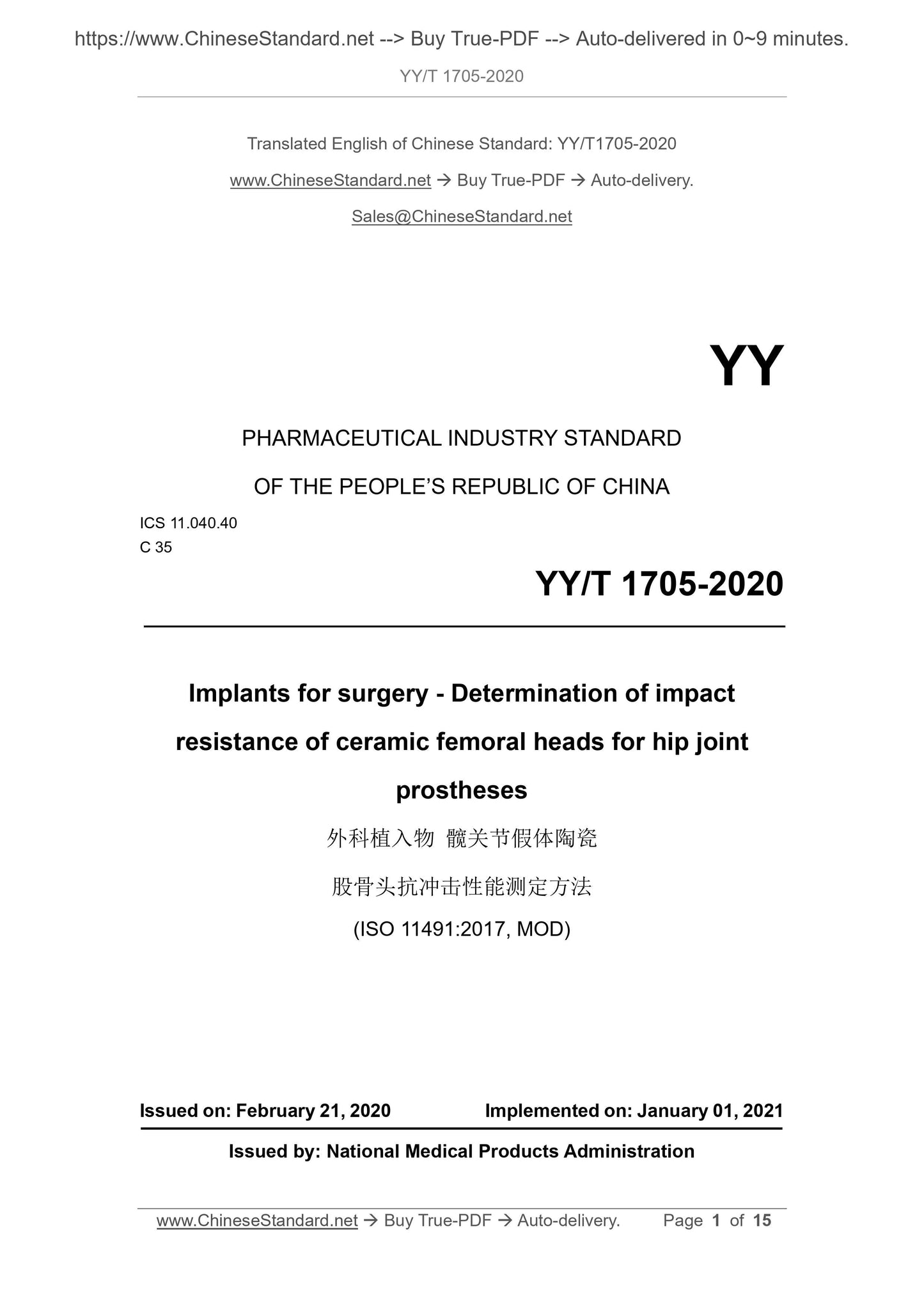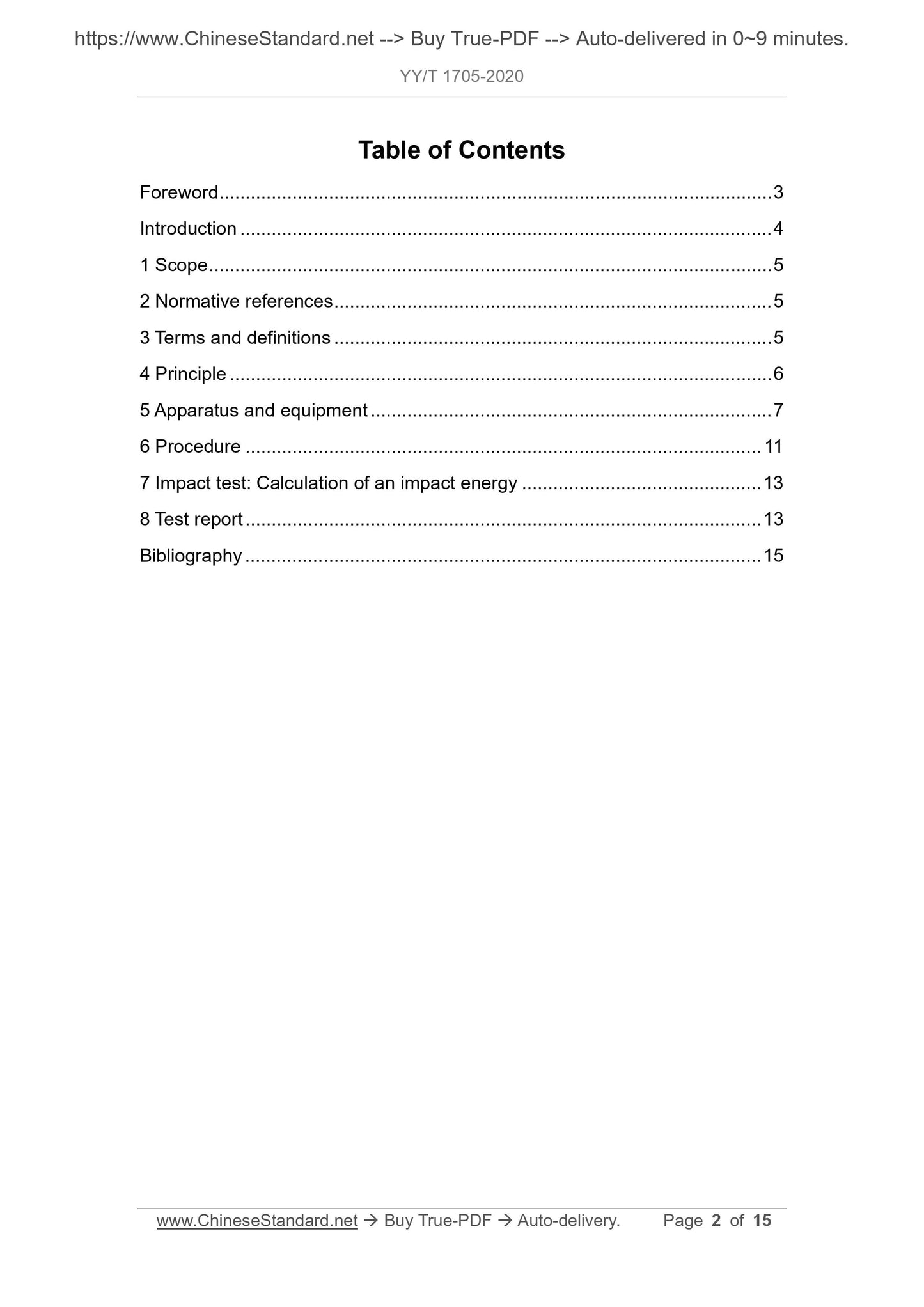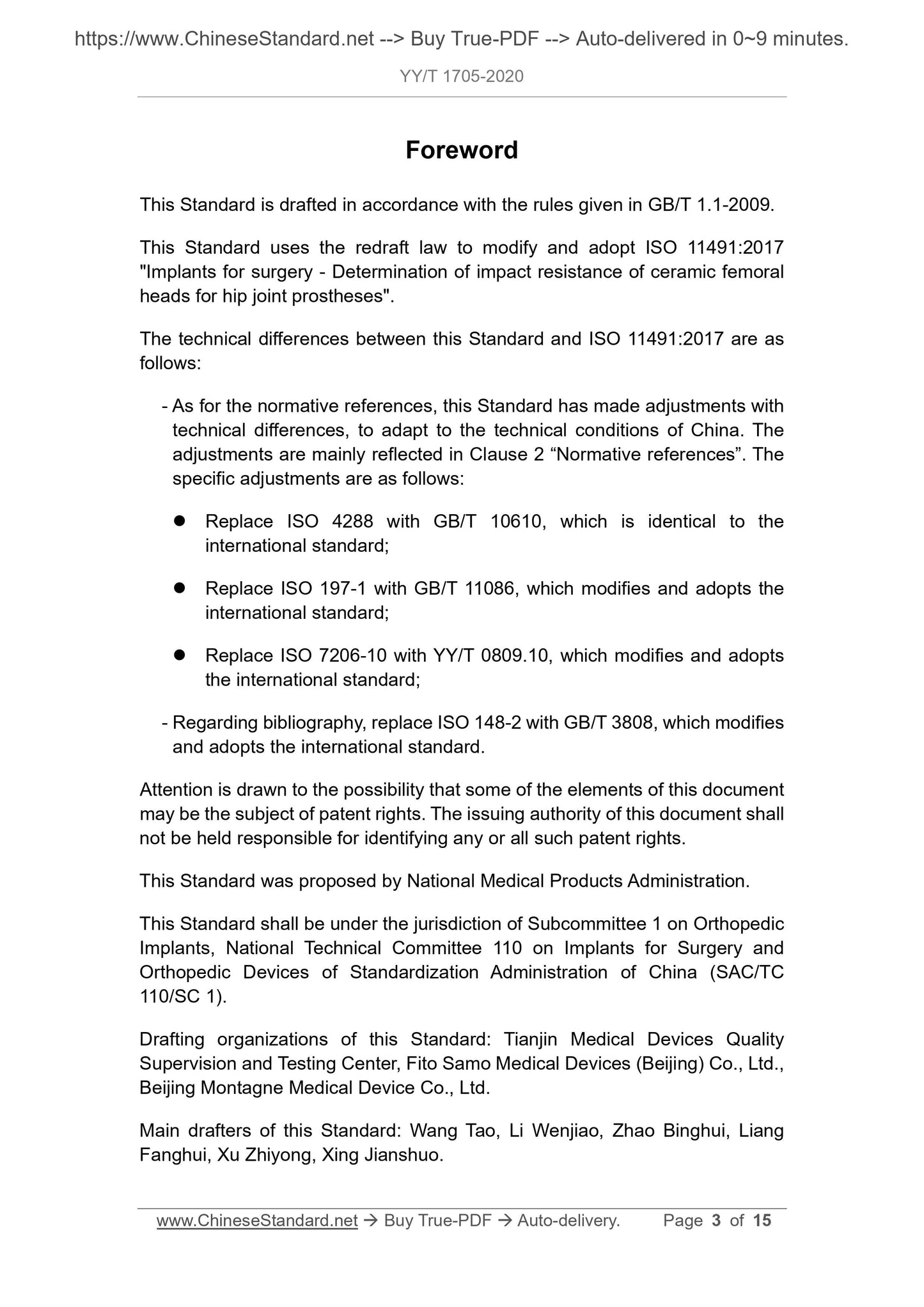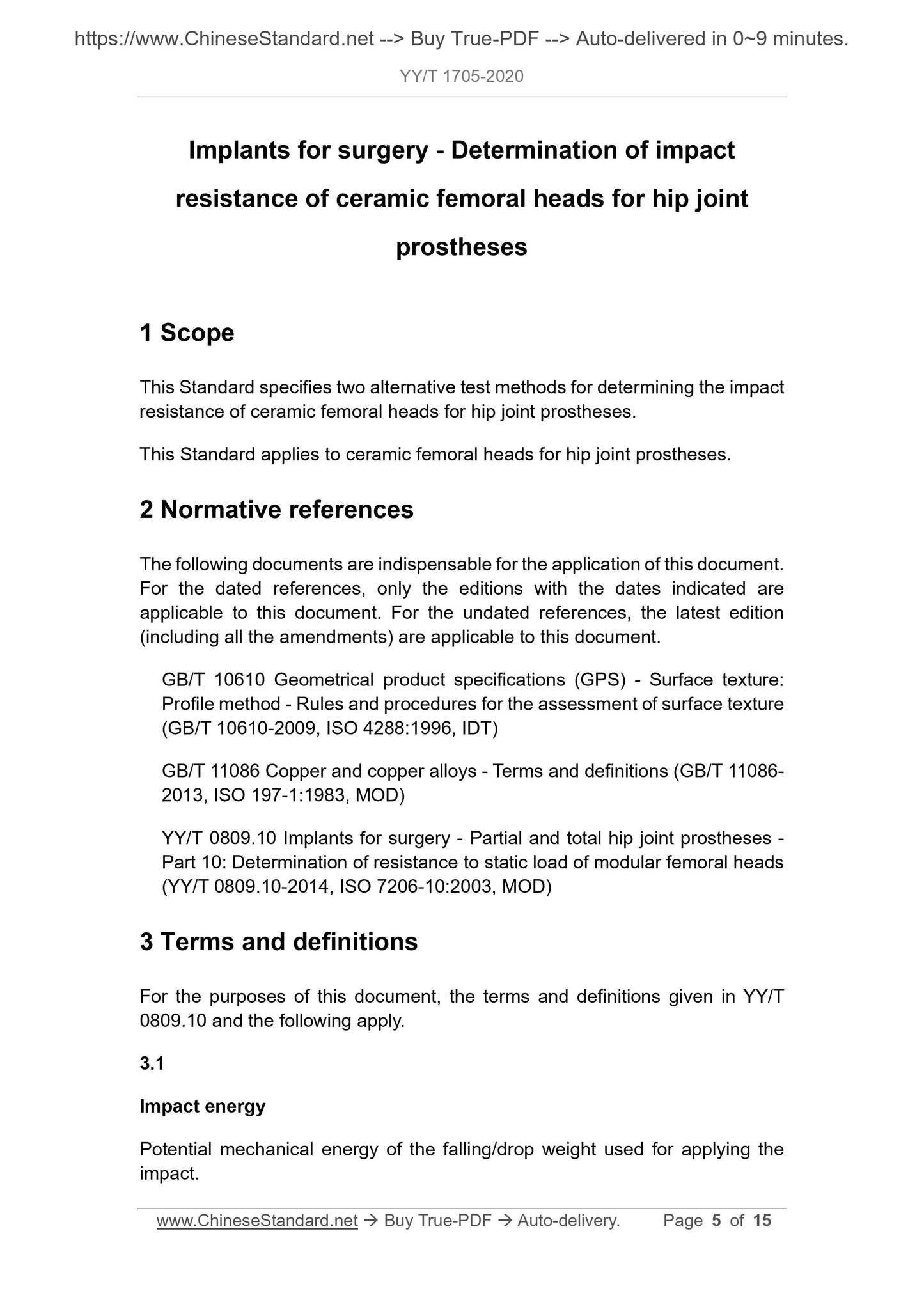1
/
of
4
www.ChineseStandard.us -- Field Test Asia Pte. Ltd.
YY/T 1705-2020 English PDF (YY/T1705-2020)
YY/T 1705-2020 English PDF (YY/T1705-2020)
Regular price
$185.00
Regular price
Sale price
$185.00
Unit price
/
per
Shipping calculated at checkout.
Couldn't load pickup availability
YY/T 1705-2020: Implants for surgery--Determination of impact resistance of ceramic femoral heads for hip joint prostheses
Delivery: 9 seconds. Download (and Email) true-PDF + Invoice.Get Quotation: Click YY/T 1705-2020 (Self-service in 1-minute)
Newer / historical versions: YY/T 1705-2020
Preview True-PDF
Scope
This Standard specifies two alternative test methods for determining the impactresistance of ceramic femoral heads for hip joint prostheses.
This Standard applies to ceramic femoral heads for hip joint prostheses.
Basic Data
| Standard ID | YY/T 1705-2020 (YY/T1705-2020) |
| Description (Translated English) | Implants for surgery--Determination of impact resistance of ceramic femoral heads for hip joint prostheses |
| Sector / Industry | Medical Device and Pharmaceutical Industry Standard (Recommended) |
| Classification of Chinese Standard | C35 |
| Classification of International Standard | 11.040.40 |
| Word Count Estimation | 10,141 |
| Date of Issue | 2020 |
| Date of Implementation | 2021-01-01 |
| Issuing agency(ies) | State Drug Administration |
| Summary | This standard specifies two alternative test methods for determining the impact resistance of ceramic femoral heads of hip joint prostheses. This standard applies to hip prosthesis ceramic femoral head. |
Share







